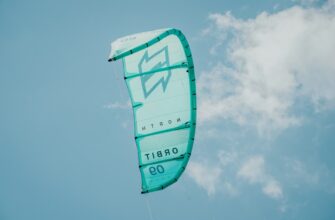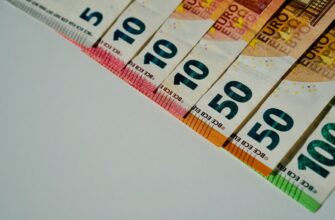## Introduction
Range trading Ethereum during high volatility on a 1-hour timeframe offers explosive profit potential for OKX traders. This strategy capitalizes on ETH’s price oscillations between predictable support and resistance levels, amplified by crypto market swings. With OKX’s advanced charting tools and liquidity, traders can systematically harvest gains from short-term price cycles. This guide breaks down the mechanics of ETH range trading on OKX, optimized for volatile 1-hour charts.
## What is Range Trading?
Range trading involves identifying horizontal price boundaries where an asset repeatedly bounces between support (price floor) and resistance (price ceiling). Unlike trend following, it profits from predictable reversals at these levels. Key elements include:
– **Support**: Price level where buying pressure overwhelms selling, causing rebounds
– **Resistance**: Zone where selling pressure halts upward momentum
– **Range Confirmation**: Requires at least two touchpoints at both support and resistance
## Why Ethereum & OKX for Volatile Range Trading?
Ethereum’s inherent volatility—driven by gas fee fluctuations, protocol upgrades, and DeFi trends—creates ideal range-bound conditions. OKX enhances this with:
– Ultra-tight ETH/USDT spreads (as low as 0.01%)
– Real-time volatility indicators and heatmaps
– Low 0.08% taker fee for high-frequency trades
– 100x leverage options (use cautiously)
## The 1-Hour Timeframe Advantage
Trading ETH ranges on 1-hour charts strikes the perfect balance for volatility exploitation:
– **Avoids Noise**: Filters out insignificant 5-15 minute price spikes
– **Captures Swings**: Matches ETH’s typical 2-4 hour volatility cycles
– **Time Efficiency**: 4-6 clear setups daily vs. longer timeframes
– **Risk Control**: Faster exit opportunities if ranges break
## Step-by-Step Range Trading Strategy on OKX
Execute this 5-step framework during high volatility periods:
1. **Identify the Range**
– Use OKX’s drawing tools to mark clear support/resistance on 1H ETH/USDT chart
– Confirm with volume spikes at boundaries (volume > 20% above average)
2. **Entry Triggers**
– Buy near support with bullish reversal candles (e.g., hammer, engulfing)
– Sell/short near resistance with bearish patterns (shooting star, dark cloud cover)
3. **Order Placement**
– Limit orders within 0.3% of support/resistance
– Set take-profit at opposite boundary (e.g., buy at support → TP at resistance)
4. **Volatility Filter**
– Only trade when 1H ATR (Average True Range) > $50
– Confirm with Bollinger Band width expansion
5. **Exit Protocol**
– Close position at TP or if price closes 2% beyond range with high volume
## Risk Management Tactics
Protect capital in volatile markets with these OKX features:
– **Stop-Loss Placement**: 1-2% below support (longs) or above resistance (shorts)
– **Position Sizing**: Risk ≤1% account balance per trade
– **Leverage Discipline**: Max 5x leverage during extreme volatility
– **Time Stops**: Auto-close trades unresolved after 8-10 candles
## Advanced OKX Tools for Range Traders
Maximize efficiency with these platform features:
– **Algo Orders**: Set OCO (One-Cancels-Other) bracket orders
– **Volatility Scanner**: Custom alerts for ATR spikes
– **Depth Chart**: Identify liquidity clusters at range boundaries
– **TradingView Integration**: Backtest strategies with historical data
## Frequently Asked Questions
**Q: How do I know if ETH is in a range vs. trending?**
A: Use ADX (Average Directional Index) on OKX charts. Readings below 20 indicate range-bound conditions. Also watch for lower highs + higher lows within a channel.
**Q: What leverage is safe for 1H ETH range trading?**
A: Never exceed 10x. For high volatility, 3-5x is optimal. OKX’s risk calculator helps simulate outcomes before trading.
**Q: How many range touches confirm a valid setup?**
A: Minimum two tested bounces at both support and resistance. Three touches significantly increase success probability.
**Q: Can I automate this strategy on OKX?**
A: Yes! Use OKX’s TradingBot for grid strategies. Set “Price Range” mode with 5-10 grids between support/resistance for hands-free execution.
**Q: Which indicators best complement range trading?**
A: Combine RSI (for overbought/oversold zones) and volume profile. Set RSI alerts at 30/70 levels on OKX charts.
## Conclusion
Mastering Ethereum range trading on OKX’s 1-hour charts transforms volatility from a threat into a profit engine. By rigorously applying support/resistance principles, leveraging OKX’s institutional-grade tools, and enforcing disciplined risk controls, traders can consistently capitalize on ETH’s price oscillations. Start with small position sizes, backtest your strategy, and gradually scale as you refine your edge in crypto’s most dynamic market.








